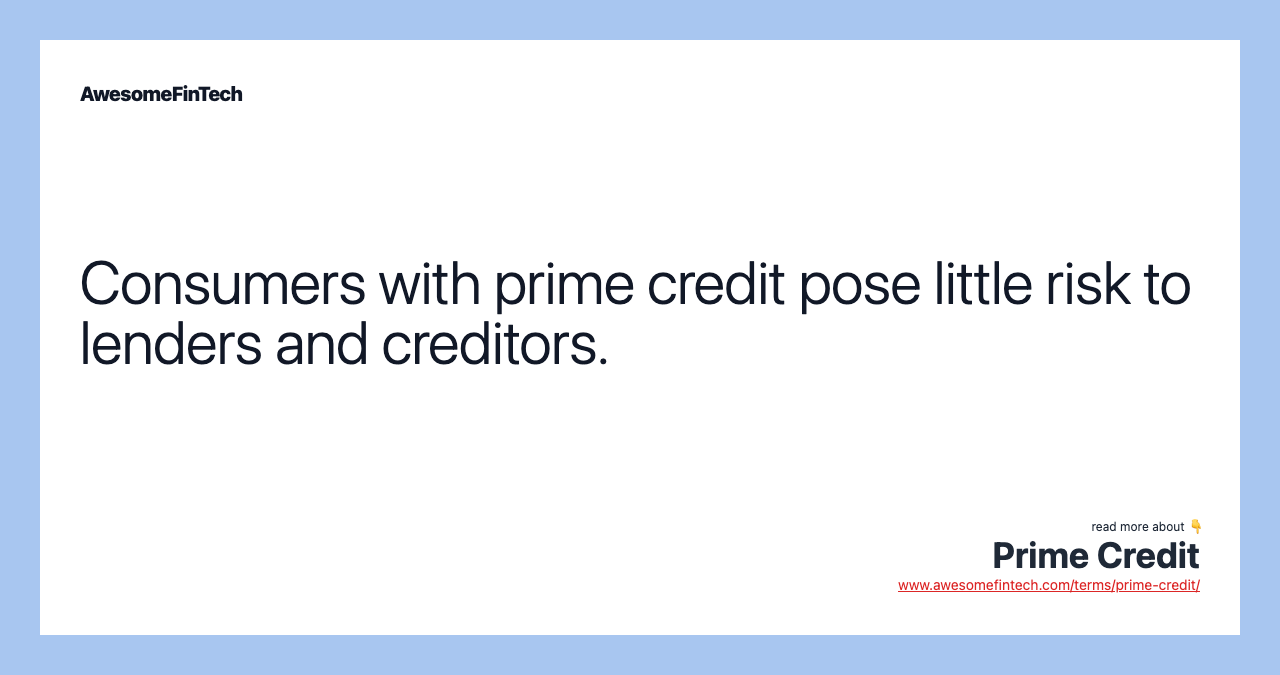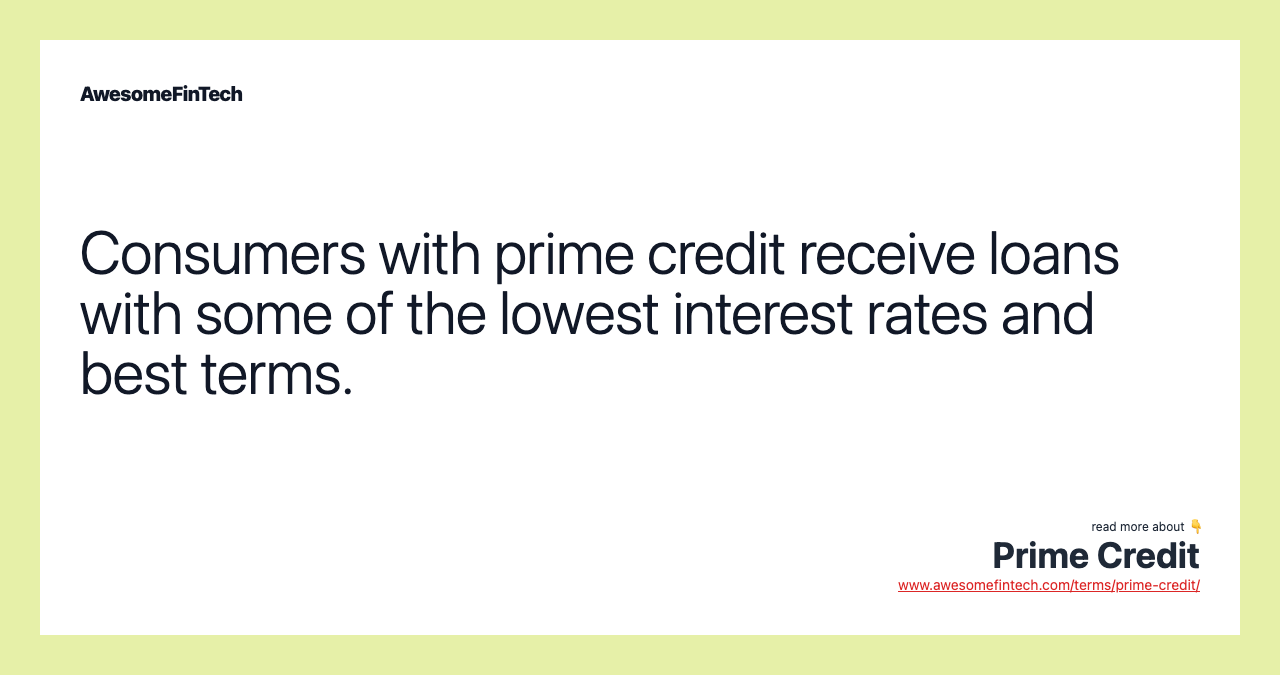Prime Credit
Prime credit refers to a credit score that is one level below super prime, the highest credit rating. Or, if your score is toward the lower end of the prime range, you might find that some lenders classify you as having prime credit while others classify you as having near-prime credit. Although each of the three main credit bureaus — Equifax, Experian, and TransUnion — have the same overall range of credit scores (300 to 850), the credit score range that is considered prime may vary. For example, having a prime credit score might mean paying 1% more on an auto loan than a borrower with a super-prime credit score. Consumers with scores at the highest end of these ranges are considered to have super-prime credit, and consumers whose scores fall just below that range are considered to have prime credit.

What Is Prime Credit?
Prime credit refers to a credit score that is one level below super prime, the highest credit rating. Consumers with prime credit have very good credit and pose little risk to lenders and creditors. Lenders and credit card companies offer some of their top loans and cards with the lowest interest rates and best terms to consumers with prime credit.



Understanding Prime Credit
Although each of the three main credit bureaus — Equifax, Experian, and TransUnion — have the same overall range of credit scores (300 to 850), the credit score range that is considered prime may vary. Consumers with scores at the highest end of these ranges are considered to have super-prime credit, and consumers whose scores fall just below that range are considered to have prime credit. Below that comes near-prime and sub-prime, the lowest score with the least advantageous terms when it comes to loans.
Although the credit bureaus have four defined ranges, the financial institutions that are the end-users may have different categories for their internal models. For example, a bank may give the best financing for car loans to anyone qualifying as a prime borrower rather than having separate terms for super-prime borrowers.
How a Prime Credit Score Affects Lending Rates
Borrowers with prime credit can expect to pay slightly higher interest rates than borrowers with super-prime credit since they are considered to have a slightly higher risk of defaulting on their loans. For example, having a prime credit score might mean paying 1% more on an auto loan than a borrower with a super-prime credit score.
Having prime credit usually means you can get a new loan and retain access to your existing credit lines even when the overall credit market is tight. Even in a strong economy where credit is readily available, prime and super-prime borrowers receive most of the credit that banks issue.
Your credit rating and classification could differ depending on the company and what bureaus they use to assess your credit score.
Variations in Credit Score Classifications
If you apply for a loan with several different companies, you might be surprised to find that some classify you as having prime credit while others classify you as having super-prime credit. Or, if your score is toward the lower end of the prime range, you might find that some lenders classify you as having prime credit while others classify you as having near-prime credit.
Because your credit file with each bureau may contain slightly different information, the score range you fall into with each bureau could be different, and lenders might offer you different rates depending on which bureau they pull your credit score from. No matter the source lenders pull from, keeping control of your debt accounts and making regular payments will help to improve your current credit score.
Related terms:
Beacon (Pinnacle) Score
The Beacon (Pinnacle) Score is a credit score generated by the Equifax Credit Bureau to provide lenders with insight on an individual's creditworthiness. read more
Credit Score: , Factors, & Improving It
A credit score is a number between 300–850 that depicts a consumer's creditworthiness. The higher the score, the better a borrower looks to potential lenders. read more
Credit Bureau
A credit bureau is an agency that collects and researches individual credit information and sells it to creditors for a fee. read more
Creditor
A creditor is an entity that extends credit by giving another entity permission to borrow money if it is paid back at a later date. read more
What Are the 5 C's of Credit?
The five C's of credit (character, capacity, capital, collateral, and conditions) is a system used by lenders to gauge borrowers' creditworthiness. read more
Interest Rate , Formula, & Calculation
The interest rate is the amount lenders charge borrowers and is a percentage of the principal. It is also the amount earned from deposit accounts. read more
Prime Borrower
A prime borrower is someone who is considered likely to make loan payments on time and likely to repay the loan in full. read more
Super-Prime Credit
Consumers with super-prime credit are considered to have excellent credit and pose the least risk to lenders and creditors. read more
VantageScore
VantageScore is a consumer credit rating product similar to the FICO score. It is used by creditors to assess the risk of lending money to a potential borrower. read more